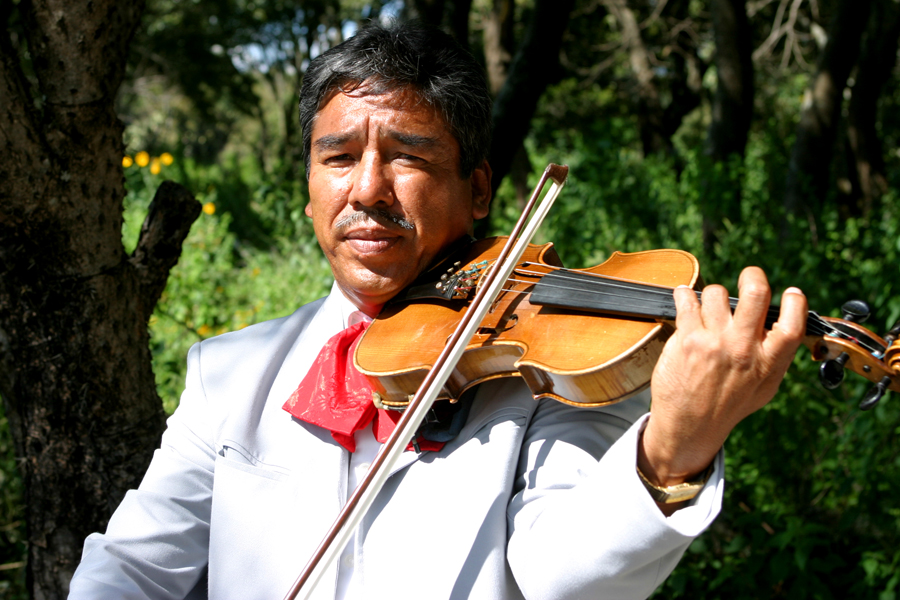I first fell under the charm of Señorita Sangrita in Guadalajara on a warm day in June several years ago. I was in line at the bank, waiting to change some money, when an elegantly dressed older gentleman, wearing a worn Panama hat and carrying a walking stick, came in, tapped on the marble counter with the brass head of his stick, and requested “Un completo, por favor.”
The courteous teller politely accepted the gentleman’s order and then had a security guard escort him back to him home just down the street. When I got to the window, I asked the teller what that was all about. He said that where the bank was there was once a cantina where the man, who now suffered from dementia, regularly stopped in for his afternoon completo.
Seeing the quizzical look on my face, he said, “You know, of course, about Señor Tequila.”
“Si, claro,” I said.
“And you know of Señorita Sangrita?”
I admitted I did not. “Then, my friend, you do not know tequila,” he said sadly.
This was a serious blow. So promptly at two, when the bank closed so that its employees could go home to eat, the teller, whose name was Ramon, joined me at a nearby restaurant where, before we sat down to eat, we went to the bar and ordered a completo for each of us. While we were waiting for our drinks, Ramon schooled me. A completo, he patiently explained, is a shot of tequila and another of sangrita served in tall, narrow glasses called caballitos. “It is the only proper way to drink tequila,” he said. He took a small sip of tequila, then an equal sip of sangrita. “Tequila is the man. But sangrita is the woman. Just as in life with a man and a woman, sangrita makes the tequila complete.”
He was right. The no-name tequila was harsh and the alcohol burned my throat. But the soothing mixture of orange, lime, and pomegranate juices along with the sweetness of sugar and fire of chile, refined the tequila’s overbearing demeanor. The uncouth beast had been tamed.
I was immediately smitten. Now whenever I order a shot of tequila it is always accompanied by a shot of sangrita. But it never comes the same way twice for there are as many versions of sangrita as there are feast days in Mexico. In San Miguel, where the most common citrus tree is the tart, bitter Seville orange (used for making Cointreau and marmalade), it is usually sweetened with grenadine. In Chihuahua, you’re likely to get a lime and tomato juice combo. And in tropical areas of Mexico, pineapple is often the predominant juice.
Writer Alberto Ruy-Sáanchez, in his book Tequila, proclaims sangrita to be tequila’s inseparable companion and insists that it can only be made “with grenadine, orange juice, Cointreau and chilies, and not with tomato juice as most people think.” Yet here in Jalisco, the heart and soul of Mexico’s tequila country, most bars use not only tomato juice in their sangrita but oftentimes Clamato juice as well (which, frankly, I’m rather addicted to).
So after years of sampling, here’s what I know about sangrita: It is always (or never) made with tomato juice. You can use grenadine, but pomegranate juice is better; best of all is to use neither. Orange juice is requisite. But only if they are sour or green oranges. Pineapple juice? Yes—or maybe not. Never use chopped onion. But perhaps a little onion juice. Everyone agrees that it needs some spice, but whether that be fresh jalapenos, cayenne pepper flakes, roasted chipotles, or Tabasco sauce—well, who can say?
In short, like many a woman, sangrita is a wonderful enigma—mysterious, evocative, alluring.
If you go to a cantina in Mexico and order a completo, you’re going to get whatever sangrita the house makes. But if you were a guest at mi casa in Bucerias, you would get a sangrita that is perfectly blended and formidable enough to hold up to even a strong, peppery tequila like Don Eduardo añejo. Here’s my recipe for about a liter (enough for a good-sized party):
The Flâneur’s Sangrita
2 cups tomato juice
1 cup Dole pineapple juice
1 cup fresh orange juice
1/4 cup fresh Mexican lime juice
1/4 cup sweet & sour mix
1 teaspoon Tapatio hot sauce
dash each of Worcestershire sauce, bitters, celery salt, and ground black pepper.
Mix all the ingredients well and chill for at least an hour. Serve in small glasses partially rimmed with Kosher salt.







Recent Comments